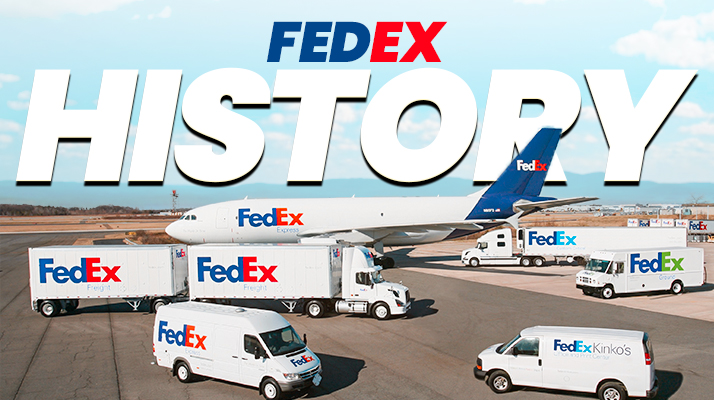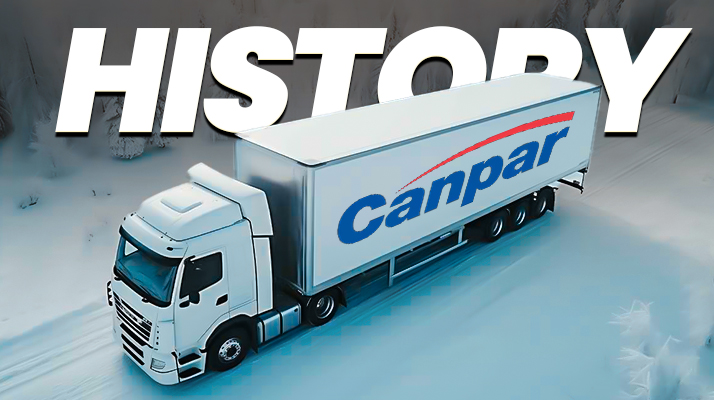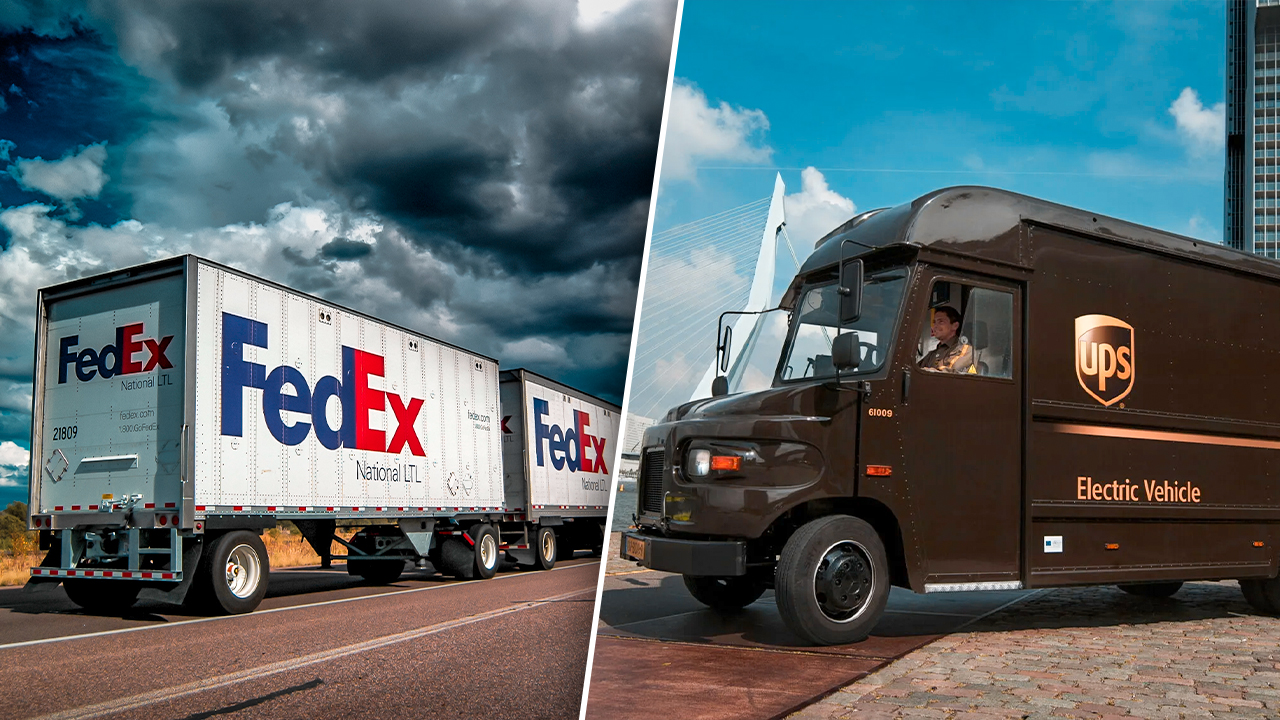The History of Federal Express
The Evolution of Fedex
- Early Years (1970s)
- Expansion and Innovation (1980s)
- Global Expansion (1990s)
- Digital Transformation (2000s)
- Diversification and Acquisitions (2010s)
- Early Years (1970s)
Key Milestones in Fedex's History
- First Overnight Delivery (1973)
- Launch of Fedex Ground (1985)
- Acquisition of Kinko's (2004)
- Launch of SameDay City Service (2012)
The Impact of Fedex on the Shipping Industry
- Revolutionizing the Overnight Delivery Market
- Setting Industry Standards and Innovations
- Competition and Challenges
FedEx, founded by Frederick W. Smith in 1971, has changed the way we think about shipping and logistics since its inception. Born out of a need for reliable overnight delivery services, the company has undergone remarkable transformations over the decades. From its humble beginnings in Memphis to a global powerhouse in the shipping industry, FedEx has set the standard for efficiency and innovation.
This article explores the origins of FedEx, key milestones in its evolution, and its lasting impact on the shipping landscape. Join us as we trace the journey of FedEx from a startup to an industry leader, including its partnership with organizations like St. Jude Children’s Research Hospital.
1. When and Why Was Fedex Created?
FedEx, founded by Frederick W. Smith in 1971, revolutionized the logistics and shipping industry by introducing overnight delivery services, addressing a growing demand for efficient parcel transportation. Initially established in Memphis, Tennessee, the company emerged from Smith's vision of creating a system that could swiftly deliver packages across the United States, thereby transforming how businesses and individuals approached shipping. Over the years, FedEx has evolved into a global leader in logistics, driven by innovation and a commitment to service, making it a pivotal player in the history of transportation. The company's success has been marked by its adaptability in times of challenge, including the COVID-19 pandemic.
The Founding of Fedex
FedEx was founded in 1971 by Frederick W. Smith, who aimed to create a reliable overnight delivery service from its headquarters in Memphis, Tennessee.
This ambitious vision was not without significant challenges. From the outset, the company grappled with financing issues that threatened its very existence.
Smith encountered skepticism from investors who were unsure of the feasibility of his idea, forcing him to make difficult decisions regarding budgeting and operational strategies.
Establishing a dependable logistics network posed another hurdle; the initial operations relied heavily on a multitude of aircraft and a limited infrastructure. Memphis, although pivotal, required extensive development to serve as a suitable hub, essential for managing increased demand during peak seasons, such as the holiday periods.
The city’s strategic location made it ideal for distribution, but transforming it into a bustling logistical center demanded vision, persistence, and considerable investment.
The Need for Overnight Delivery Services
The rise of e-commerce and global trade, highlighted by giants like Amazon, has created a significant demand for overnight delivery services, revolutionizing logistics and shipping practices.This surge stems from consumers’ growing expectation for rapid fulfillment and enhanced convenience in their purchasing experiences. Companies must adapt to this evolving landscape, where speed and reliability are no longer luxuries but necessities.
As a result, sectors such as retail, pharmaceuticals, and technology are increasingly relying on overnight shipping to meet customer demands. For instance, in the retail sector, businesses offering same-day or next-day delivery can significantly boost their competitiveness, thereby elevating customer satisfaction. This trend is particularly crucial for businesses shipping time-sensitive items, such as the COVID-19 vaccine.
Critical industries like healthcare depend on timely shipments for life-saving medications, including those related to the COVID-19 vaccine, making fast delivery not just important, but often essential. The reliance on such services highlights a transformative shift in how goods are transported and received in today’s fast-paced world.
2. The Evolution of Fedex
The evolution of FedEx has been marked by a series of strategic expansions and innovations that have transformed it from a domestic overnight delivery service into a global logistics powerhouse, impacting the shipping and transportation industry profoundly over the decades.Early Years (1970s)
In its early years during the 1970s, FedEx focused on building a reliable overnight shipping service, laying the foundation for the logistics industry and setting benchmarks for the standards of express delivery.This bold initiative was not without its challenges, which included establishing a comprehensive network of hubs and routes to ensure timely deliveries. The company faced fierce competition, an evolving regulatory environment, and the ongoing need to innovate its processes.
By introducing a real-time tracking system and a groundbreaking hub-and-spoke model, it managed to gain a competitive edge over rivals like United Parcel Service. The successes of that decade would ultimately prove vital, influencing FedEx's strategic direction for years to come.
- Development of a robust logistics framework
- Introduction of tracking technology
- Building customer trust through reliability
These foundational elements shaped the company’s future, allowing it to become a leader in the global shipping sector.
Expansion and Innovation (1980s)
The 1980s marked a period of significant expansion and innovation for FedEx, as the company introduced advanced aircraft and logistics systems to enhance its shipping capabilities, solidifying its status as a leader in the logistics field. This era not only revolutionized the logistics landscape but also set new benchmarks for the industry, showcasing how technology could streamline operations and improve service delivery.Among the most notable innovations was the addition of a diverse fleet that included the Boeing 727 and McDonnell Douglas DC-10, which allowed for faster and more efficient transportation of packages. This expansion meant that FedEx could not only handle larger volumes of shipments but also reach more destinations in a timely manner.
Innovative tracking systems were also implemented, providing customers with real-time information about their packages, a game-changer in customer service.
- The adoption of centralized sorting facilities improved processing times.
- Enhancements in ground delivery services complemented air freight options.
The cumulative effect of these advancements was a significant boost in shipping efficiency, leading to heightened customer satisfaction and loyalty, essential for maintaining a competitive edge in a growing global market.
Global Expansion (1990s)
In the 1990s, FedEx embarked on a global expansion strategy, positioning itself as a leader in international shipping and logistics, determined to redefine how goods traverse borders and reach consumers around the world, capitalizing on emerging e-commerce opportunities.To achieve its ambitious goals, the company faced numerous hurdles, from complex regulatory environments to fierce competition, navigating challenges akin to those faced by other major carriers in the industry.
- Adapting to varying customs procedures in different nations proved challenging, making compliance a top priority.
- Cultural differences and varying consumer demands necessitated a tailored approach to service.
FedEx implemented advanced technologies and established strategic alliances with local carriers, significantly improving logistics efficiency and ensuring timely deliveries across borders.
By investing in infrastructure and training local workforce, the company not only streamlined its operations but also enhanced customer experiences, thereby solidifying its position as a global leader in shipping and logistics.
Digital Transformation (2000s)
The 2000s witnessed FedEx embracing digital transformation, leveraging technology to enhance its logistics operations and customer experience.During this transformative decade, the integration of digital tools significantly redefined logistics strategies, making them more efficient and customer-centric. By incorporating online tracking systems, customers could monitor their shipments in real-time, creating a sense of transparency and trust. This not only improved customer satisfaction but also streamlined internal processes.
- Partnerships with e-commerce platforms allowed FedEx to tap into a rapidly growing market, catering to the surge in online shopping.
- These innovations facilitated quicker deliveries and optimized inventory management, positioning FedEx as a frontrunner in the logistics industry.
Ultimately, the adoption of advanced technology transformed the entire shipping experience, proving essential in meeting the evolving demands of consumers and businesses alike, especially as new entrants in the market began offering similar services.
Diversification and Acquisitions (2010s)
In the 2010s, FedEx diversified its services and pursued acquisitions, including the notable purchase of Kinko's and partnerships with e-commerce companies, to enhance its logistics capabilities.These strategic moves not only expanded the company’s portfolio but also positioned it to better meet evolving customer demands in a rapidly shifting marketplace, particularly in the face of growing e-commerce trends. By integrating services such as printing and office solutions through Kinko's, FedEx aimed to create a more comprehensive one-stop shop for small to medium-sized businesses.
- The acquisition allowed FedEx to streamline deliveries, offering customers faster turnaround times.
- Enhancing its online presence enabled the company to reach a broader audience.
- These efforts reflected an understanding of market trends, cultivating a reputation for adaptability.
Ultimately, by embracing diversification and strategic acquisitions, including partnerships with St. Jude and supporting community initiatives, FedEx not only bolstered its logistics operations but also reinforced its standing as a key player in the industry.
3. Key Milestones in Fedex's History
FedEx has achieved numerous key milestones throughout its history, each contributing to its reputation as a leader in the shipping and logistics industry.First Overnight Delivery (1973)
In 1973, FedEx completed its first overnight delivery, setting a new standard in the shipping industry and showcasing the company's innovative approach, further solidifying the brand's reputation for express delivery excellence.This groundbreaking achievement not only cemented the brand's reputation for reliability but also revolutionized how businesses and individuals sent and received packages, establishing FedEx as a household name synonymous with delivery service.
Customers began to expect quicker solutions for their shipping needs, creating a demand for speed that influenced competitors to adapt. FedEx's commitment to efficiency underscored the importance of technology in logistics, driving investments in tracking systems and aircraft fleets.
The overnight delivery concept infused urgency into the consumer mindset, pushing other shipping companies to rethink their service offerings. As a result, the landscape of shipping was forever altered, with expedited services becoming a core expectation in the industry.
Launch of Fedex Ground (1985)
The launch of FedEx Ground in 1985 marked an important expansion in FedEx's service offerings, providing cost-effective shipping solutions for businesses and individuals, contributing to the company's revenue growth.This strategic move allowed the company to tap into the burgeoning demand for affordable logistics, particularly within the North American market, including contracts with major players like Amazon. With its distinctive ground delivery service, FedEx Ground established a reliable platform that catered to both large corporations and small enterprises alike.
By emphasizing speed and affordability, it revolutionized the shipping experience, laying the groundwork for future campaigns and branding efforts. The integration of advanced tracking technology ensured that customers could monitor their shipments effortlessly, enhancing reliability. This expansion not only filled a crucial gap in the logistics sector but also streamlined operations, allowing FedEx to consolidate its business model while ensuring sustainability and efficiency.
- Improved delivery efficiencies
- Broadened service coverage
- Enhanced customer satisfaction
These implications underscored a pivotal moment in logistics, paving the way for complementary services and redefining the industry's expectations.
Acquisition of Kinko's (2004)
In 2004, FedEx acquired Kinko's, further diversifying its service offerings and enhancing its logistics capabilities, which included a focus on corporate needs and services.This strategic acquisition was not merely about expanding FedEx’s reach into the copy and print services market; it was a calculated move to integrate complementary business models, thereby creating a seamless customer experience across various touchpoints. By incorporating Kinko's locations, FedEx effectively turned retail outlets into multifaceted service centers where clients could easily access shipping solutions while also fulfilling their printing and document needs.
- The integration allowed FedEx to leverage Kinko's extensive network to serve customers more efficiently.
- By offering printing services alongside shipping, FedEx provided a one-stop solution that attracted small businesses and individual customers alike.
- This approach was instrumental in positioning FedEx not only as a logistics provider but also as a vital resource for business services.
Ultimately, the union of these two brands exemplified a forward-thinking strategy, enhancing operational synergy and paving the way for sustained growth in a competitive landscape, much like the achievements celebrated in the Vince Lombardi Trophy during the Super Bowl.
Launch of SameDay City Service (2012)
In 2012, FedEx launched its SameDay City Service, providing fast, local delivery options and showcasing the company's commitment to innovation in logistics, which was crucial during events like the delivery of the COVID-19 vaccine.
This initiative not only revolutionized the way packages were delivered locally but also opened up new avenues for businesses seeking quick turnaround times and enhanced customer satisfaction, similar to the quick services offered by Panda Express. To illustrate its significance:
- Flexibility: The service allows local businesses to adapt rapidly to fluctuating market demands.
- Speed: With SameDay City Service, businesses can receive and send packages on the same day, significantly reducing waiting times.
- Accessibility: Small and medium enterprises can leverage these fast delivery options, leveling the playing field with larger competitors.
The SameDay City Service reflects FedEx's adaptability in meeting the ever-evolving needs of the marketplace, ensuring that local businesses have the tools necessary to thrive, akin to the support provided by organizations like the National Rifle Association.
4. The Impact of Fedex on the Shipping Industry
FedEx has had a profound impact on the shipping industry, effectively revolutionizing logistics practices and setting standards for competition and service delivery, echoing the influence of figures like Frederick W. Smith, the founder of Federal Express.Revolutionizing the Overnight Delivery Market
FedEx revolutionized the overnight delivery market, establishing benchmarks for speed and reliability that competitors strive to meet, much like how the NFL sets standards for professional sports.This transformation was driven by an unwavering commitment to innovation, which included the development of advanced tracking systems and state-of-the-art logistics management. The company's pioneering approach made it possible for customers to monitor their shipments in real-time, enhancing transparency and trust.
- FedEx invested heavily in a fleet of aircraft specifically designed for swift transportation, allowing them to cover vast distances quickly.
- Their strategic hubs located in key regions ensured that packages could be rerouted efficiently, minimizing delays and optimizing delivery routes.
Through these efforts, the company not only set itself apart from competitors but also inspired industry-wide changes, prompting others to improve their services to keep pace with the new standards being established.
Setting Industry Standards and Innovations
FedEx has consistently set industry standards through its innovative approaches to logistics and shipping, influencing best practices globally.In particular, the company pioneered the use of advanced tracking systems, allowing customers to monitor their shipments in real-time. This innovation not only enhanced transparency but also improved customer service, as individuals and businesses could anticipate delivery times with more accuracy.
The introduction of the hub-and-spoke distribution model significantly optimized transportation efficiency, reducing transit times and costs for shippers, which is essential for meeting the demands of e-commerce giants like Amazon. These developments have set a precedent in the logistics sector, compelling competitors to adopt similar technologies and practices.
- Real-time shipment tracking
- Hub-and-spoke model
- Automated sorting systems
As a result, the broader shipping landscape has evolved, leading to increased reliability and improved customer satisfaction across the board, which benefits both consumers and businesses alike.
Competition and Challenges
Despite its successes, FedEx has faced significant competition and challenges in the logistics and shipping sectors, necessitating constant innovation.In this dynamic market, various factors contribute to the pressures faced by the company, including the rise of e-commerce giants like Amazon and enhanced service offerings from rivals. Shifting consumer expectations, characterized by a desire for faster delivery times and improved transparency, have also reshaped the landscape.
FedEx recognizes the need to not just respond but to anticipate these changes. To maintain its leadership position, the organization has implemented cutting-edge technology and streamlined operations.
- Enhancing delivery efficiency
- Investing in automation
- Expanding service networks
These strategies illustrate how the company adapts to a landscape where competition is fierce, ensuring that they continue to meet the evolving needs of their customers effectively.
5. Frequently Asked Questions
When was Federal Express (Fedex) created and why?
Federal Express (Fedex) was created in 1971 by Frederick W. Smith. He wrote a paper outlining an overnight delivery service and submitted it for his economics class at Yale University. The idea was inspired by his time in the military, where he saw the need for a faster and more reliable delivery service, a vision that would later serve as a foundation for FedEx's branding and achievements.
How did Federal Express (Fedex) evolve over time?
Initially, Federal Express (Fedex) faced financial struggles and was on the verge of bankruptcy. However, in 1973, they received a large investment from a venture capital firm, which allowed them to continue operations and build the infrastructure needed for future innovations and sustainability. Over the years, Fedex expanded its services to include international deliveries and developed innovative tracking technology.
When did Fedex become a publicly traded company?
FedEx became a publicly traded company in 1978, and its stock was listed on the New York Stock Exchange, marking a significant anniversary in its corporate history. This allowed the company to raise more capital and expand its operations even further.
What challenges has Fedex faced throughout its history?
One of the biggest challenges for Fedex was the rise of digital communication and the decline of traditional mail. However, the company adapted by focusing on e-commerce deliveries and investing in new technology to streamline their processes, ensuring they could effectively handle high volume events like auctions.
How has Fedex's delivery process changed over the years?
Initially, FedEx relied on a hub-and-spoke delivery system, where packages would be flown to a central hub and then distributed to their final destination, ensuring efficiency that paved the way for future logistics innovations. However, in recent years, they have started to incorporate more direct flights to increase efficiency and reduce delivery times.
What is Fedex's role in disaster relief efforts?
FedEx has a long history of providing support during natural disasters and humanitarian crises, often collaborating with organizations such as St. Jude Children's Research Hospital to deliver essential supplies. They have a dedicated team and fleet of aircraft and vehicles to deliver essential goods and supplies to affected areas, showcasing their commitment to sustainability and community support. In 2017, they also pledged $1 million to support relief efforts for Hurricane Harvey, exemplifying their corporate responsibility and community partnerships.







